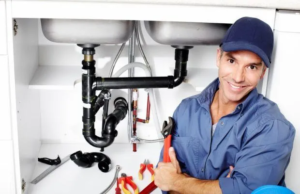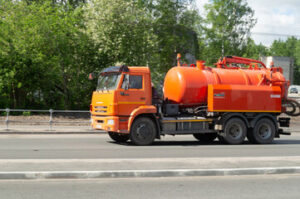Plumbing disasters rarely happen at convenient times. When they do, you need an emergency plumber right away.
There are many different reasons you might need an Emergency Plumber Aurora CO. It could be a serious leak that damages your ceiling or walls, a clogged drain, or a burst pipe.

But how do you know when it’s an emergency? Here are some tips to help you determine whether it’s time to call your local plumber.
Emergency Plumbing Repairs
If you have a plumbing emergency, it is crucial to call for help immediately. Not only can the problem affect your comfort, but it could also pose a health threat to your family. A burst pipe, for example, can cause extensive water damage in a short amount of time, while a gas leak can threaten the safety and well-being of your family members. In either case, the first thing you should do is shut off the affected fixture and then call a plumber.
When calling a plumber, try to be as descriptive as possible about the problem. This will help them give you a more accurate estimate over the phone. Also, ask about their minimum charge for off-hours service. Some plumbers charge a flat fee for the visit, while others have a one- or two-hour minimum rate. Generally, the higher the minimum, the more expensive the service will be.
Some of the most common plumbing emergencies include water leaks, sewer backups, and no hot water. If you have a water leak, it can be a big deal since it can affect the integrity of your home’s structure and lead to costly repairs over time. Additionally, if the leak is located in an area of your home that isn’t easily accessible, it can become a major safety hazard.
A clogged toilet is another common plumbing emergency that needs to be addressed right away. Not only does it prevent you from using the bathroom, but it can also be a breeding ground for germs and bacteria. A clogged toilet is also difficult to clean, so it’s best to leave this job to an expert.
Sewage backups are one of the most dangerous plumbing problems that you should never ignore. Not only can they destroy your home’s foundation and cause expensive structural repairs, but they can also put your family’s health at risk. A sewage backup usually indicates a blocked or broken line, which requires immediate attention from a skilled professional.
The best way to avoid a plumbing emergency is to regularly perform routine maintenance on your pipes, fixtures, and appliances. Having a plan in place for when an emergency occurs can also help reduce stress and cost.
Clogged Drains
Clogged drains are a nightmare. It takes forever for a sink or tub to drain, and water pools up around your feet in the shower. If you don’t get it fixed, it can back up into the house and create nasty odors. If you’re a do-it-yourselfer, there are several things you can try before calling the plumber.
The first thing you can try is to clear the clog with a plunger. This is especially effective if the clog affects only one drain. But if more than one drain is clogged, it indicates blockage or breakage farther down the pipes, and you’ll need to call in the pros.
If a plunger doesn’t do the trick, you can also use a household drain cleaner to dislodge and dissolve clogs. The key is to pour the product down a drain slowly and carefully, while plugging the drain with a rag or towel. The best product for this is a commercially available chemical that works with water, such as Bio-Clean, which consists of bacteria that digests and breaks down organic debris in your drain line. This product is safe for your pipes and is also a great maintenance item to keep on hand.
A more serious clog might require the use of a power auger. These snakes are long, flexible cables with a motor that drives them into the pipe. Plug in the auger, position it over the clog and feed a few feet of cable down the drain. Once you feel resistance or hear the motor bog down, stop feeding cable and reverse the direction of rotation. Repeat this process until the clog is cleared.
Another way to clear stubborn clogs is to bend a wire coat hanger into a hook and fish out any tangled hair particles. Another option is a wet/dry vacuum, which can also reach clogs that other tools can’t.
If your clog is in the city sewer line, it’s probably too large for you to fix without professional help. A qualified plumber will have the equipment, such as a motorized auger, to clear these large obstructions from your sewer line and return your plumbing to normal.
Faulty Shut-Off
In the event of a plumbing emergency, such as flooding from a burst pipe or raw sewage backing up through your toilet, the first thing you should do is shut off the water supply. This is why every home should have a main shut off valve that can cut off the entire water flow into your house. These are usually located in the basement, on an exterior wall, or in an underground box outside your home. Individual fixtures like toilets, sinks, and water heaters have their own valves as well that can be turned off if a problem occurs.
However, over time, these valves can develop problems. They can get stuck and become hard to open or close, or they can start leaking or dripping. If you notice this, it is important to have a plumber out as soon as possible. It’s also a good idea to check these valves on a regular basis so that you know they are working properly.
Another common problem with shut off valves is rust. These valves can break down over time and become corroded or worn out, leading to leaks or other issues. The best way to avoid this is to periodically clean them with a vinegar solution or a similar product. This will keep them from rusting and protect them from other types of damage.
Finally, it’s a good idea to replace your shut off valves with modern ball valves whenever possible. Many old homes still have saddle valves, which are very prone to leaks. These can be replaced easily, but it’s important to have a professional plumber do the work so that you don’t end up with serious water damage in the future.
While these are just a few of the most common issues that can cause shut off valves to become faulty, there are many more. If you’re not sure what to do about a problem with your shut off valve, don’t hesitate to call Jolly Plumbing for help! Our experienced plumbers can quickly and safely locate your valves and make any necessary repairs.
Burst Pipes
When a pipe bursts, it can cause an untold amount of damage. Water can gush in every direction, ruining furniture, electronics, and walls while leaving behind costly cleanup and repair bills. Luckily, a burst pipe can often be prevented with regular maintenance and preventative measures. But if your pipes have already gone bust, there are steps you can take to minimize damage and help your professional plumber work quickly to resolve the issue.
The first thing to do when a pipe bursts is turn off your home’s main water supply. This will stop the flow of water, which will make it easier to locate and clean up the leak and the burst pipe. Next, remove any electrical devices near the affected area. This will save them from potential damage and make the area safer for you to work in. You can also open all doors in the room with the burst pipe to allow air to circulate and dry up the area more quickly.
Water pipes can burst for a variety of reasons, including movement in the plumbing system, high water pressure, and clogs. Keeping an eye out for these signs of a problem can help you address the issue before it bursts. For example, large water stains on walls and ceilings, or even in the garden are common indicators of a burst water pipe. In addition, if your water suddenly starts to look or taste unusual (such as reddish or metallic), it could be an indication that the pipes are corroded.
If you do happen to notice a burst pipe, the first thing you should do is call your emergency plumber. Be sure to provide them with the location of the affected pipe and the severity of the issue. This will give them an idea of what to expect when they arrive on site, making the process much faster and more efficient. In addition, be sure to keep receipts of any repairs or relocation expenses so that you can claim them on your homeowners insurance.

